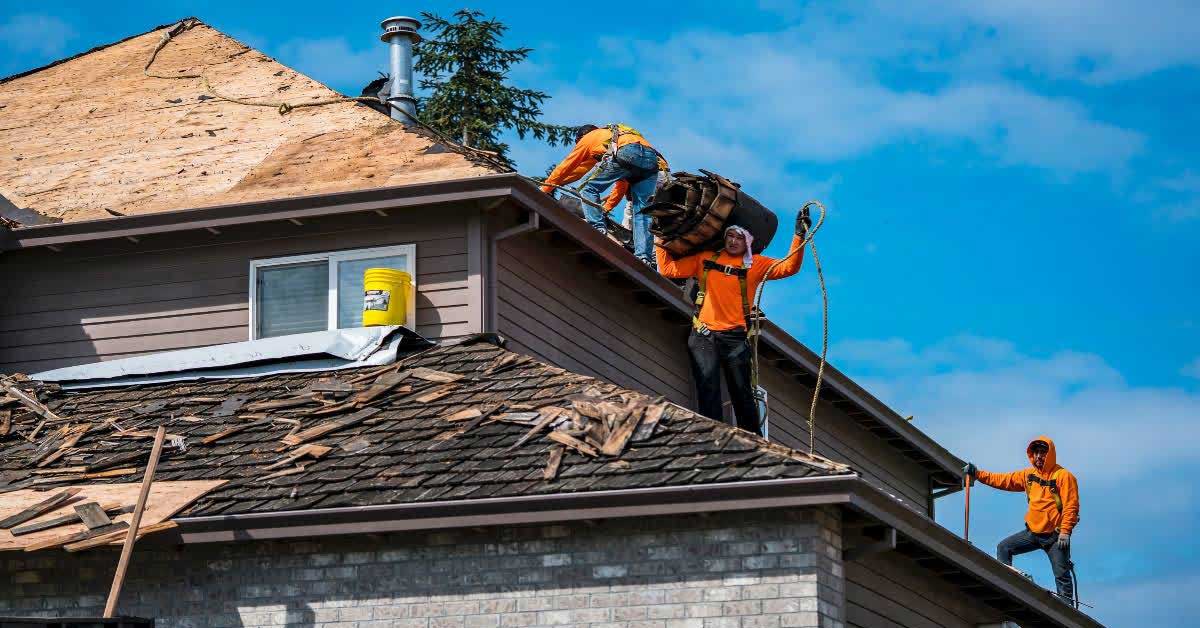10 Warning Signs and What They Mean
A solid roof above your head is crucial if you want a warm, cozy, leak-free home. Here’s some potential problems with roofs and whether these issues are serious enough to require a new roof or just a roofing repair.
- Your roof is over 20 years old. An asphalt shingle roof should last 20 to 30 years. If it’s older than that, there could be problems, even if they don’t look obvious from the ground. If you are in a development and the neighbors are starting to replace their roofing, that could be a sign that it’s time for you to do the same.
- Some shingles are missing. This is usually an easy repair if there are no other issues. But be prepared to have new shingles that don’t match the color of the old shingles, which have weathered.
- The shingles are covered with moss or algae. This does not mean the roof must be replaced. However, if moss is not removed, it can prematurely breakdown the shingles. Beware of do-it-yourself power washing, or scraping away the moss using the wrong tools. This can chip off and damage the granules, which keep the sun off the asphalt. To prolong the life of the roof, we recommend a yearly maintenance program.
- Granules from the roof are showing up in the gutter. This happens with a new roof. But if your roof is at least 10 years old and these granules are flaking off, the shingles will lose their protection from the sun and will deteriorate quickly.
- You see sunlight from your attic. This is a dangerous sign. If light is filtering in, rain, snow, and cold air can also enter. Look for water stains on the attic walls and ceiling. If these stains change in size or shape after rain storms, you have an active leak. Small leaks can be patched, but larger ones might have caused structural damage. The age of your roof is also an important consideration on whether you replace the roof or just repair it.
- Shingles are cracked. Wind damage is usually the cause of cracked shingles. If just a few shingles are cracked in a particular area, they can be replaced. However, if the cracked shingles are visible throughout the roof, this is a sign that you may need to replace the entire roof within three to five years.
- The roof is sagging. This is a dangerous sign and usually indicates structural damage. The problem could be with the attic decking or the supports in the foundation. This problem is much easier to fix when the area is small and before the sagging progresses.
- Shingles are curling. Shingles can turn upward, which is called cupping, or they can start clawing, which is when the edges stay flat and the middle starts to come up. This is a sign of weathering and may indicate that the roof may soon start leaking. A new roof is needed when the curling becomes extensive.
- Spongy feeling when walking on roof. This means the underlying decking has been damaged by moisture. Check your attic to see if there is any daylight showing through the roof boards. Also check for moisture in the insulation. Small leaks can be repaired, but larger ones might have caused structural damage. Take into account the age of your roof when considering whether to replace the roof or just repair it.
- Major damage, such as a tree falling on roof. It is difficult to easily ascertain whether or not the roof is structurally sound enough to just be repaired, or whether the entire roof needs to be replaced. An onsite inspection from a professional roofing company can help you make the best decision.
When an asphalt roof is damaged or aging and you don’t know how extensive the damage is, an independent roofing inspector can give you sound, impartial advice on whether to replace or repair your roof.

